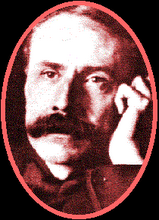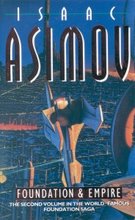 The relationship between music and mathematics has long been established. For example Pythagoras reportedly discovered that pleasing musical intervals could be described using simple ratios.
The relationship between music and mathematics has long been established. For example Pythagoras reportedly discovered that pleasing musical intervals could be described using simple ratios.And the so-called musica universalis or "music of the spheres" emerged in the Middle Ages as the philosophical idea that the proportions in the movements of the celestial bodies,the sun, moon and planets, could be viewed as a form of music, inaudible but perfectly harmonious.
Now three professors of music, Clifton Callender at Florida State University, Ian Quinn at Yale University and Dmitri Tymoczko at Princeton University, have devised a new way of analysing and categorising music that takes advantage of the deep, complex mathematics they see enmeshed in its very fabric.
They have now outlined a method called "geometrical music theory" that translates the language of musical theory into that of contemporary geometry. They take sequences of notes, like chords, rhythms and scales, and categorize them so they can be grouped into "families." They have found a way to assign mathematical structure to these families, so they can then be represented by points in complex geometrical spaces, much the way "x" and "y" coordinates, in the simpler system of high school algebra, correspond to points on a two-dimensional plane.
Different types of categorization produce different geometrical spaces, and reflect the different ways in which musicians over the centuries have understood music. This achievement, they expect, will allow researchers to analyse and understand music in much deeper and more satisfying ways.
The trio have suggested that this method will allow the analysis and comparison between many kinds of music which have chords as a basic element
Tymoczko explained. "The whole point of making these geometric spaces is that, at the end of the day, it helps you understand music better. Having a powerful set of tools for conceptualising music allows you to do all sorts of things you hadn't done before."
"You could create new kinds of musical instruments or new kinds of toys," he added. "You could create new kinds of visualization tools, imagine going to a classical music concert where the music was being translated visually. We could change the way we educate musicians. There are lots of practical consequences that could follow from these ideas."
The tools for analysis also offer the exciting possibility of investigating the differences between musical styles.
"Our methods are not so great at distinguishing Aerosmith from the Rolling Stones," Tymoczko said. "But they might allow you to visualize some of the differences between John Lennon and Paul McCartney. And they certainly help you understand more deeply how classical music relates to rock or is different from atonal music."
Alternatively one could kick back in a darkened room with an intoxicant of choice, whack on an LP and probably get to see lots of pretty shapes too.
Well I thought in a final bit of symmetry, if not geometry, a discussion primarily about classical music provides an opportunity to wish readers wherever they are a happy St. George’s Day and to leave you with a bit of music that will surely stir more than just English hearts.














3 comments:
Ah Elgar, I don't need geometric shapes to enjoy this.
Whack on an LP? All gone now, just hundreds of CDs.
Ah yes I agree lovely music :-) I don't think I need the geometric shapes either!
Was St. George the last knight of the Proms, perhaps ;-) ???
Post a Comment